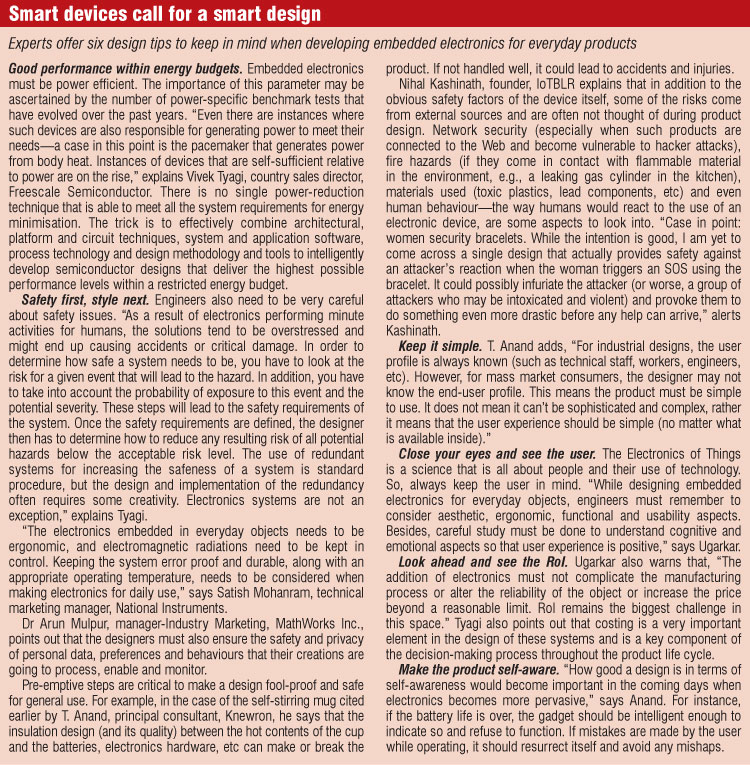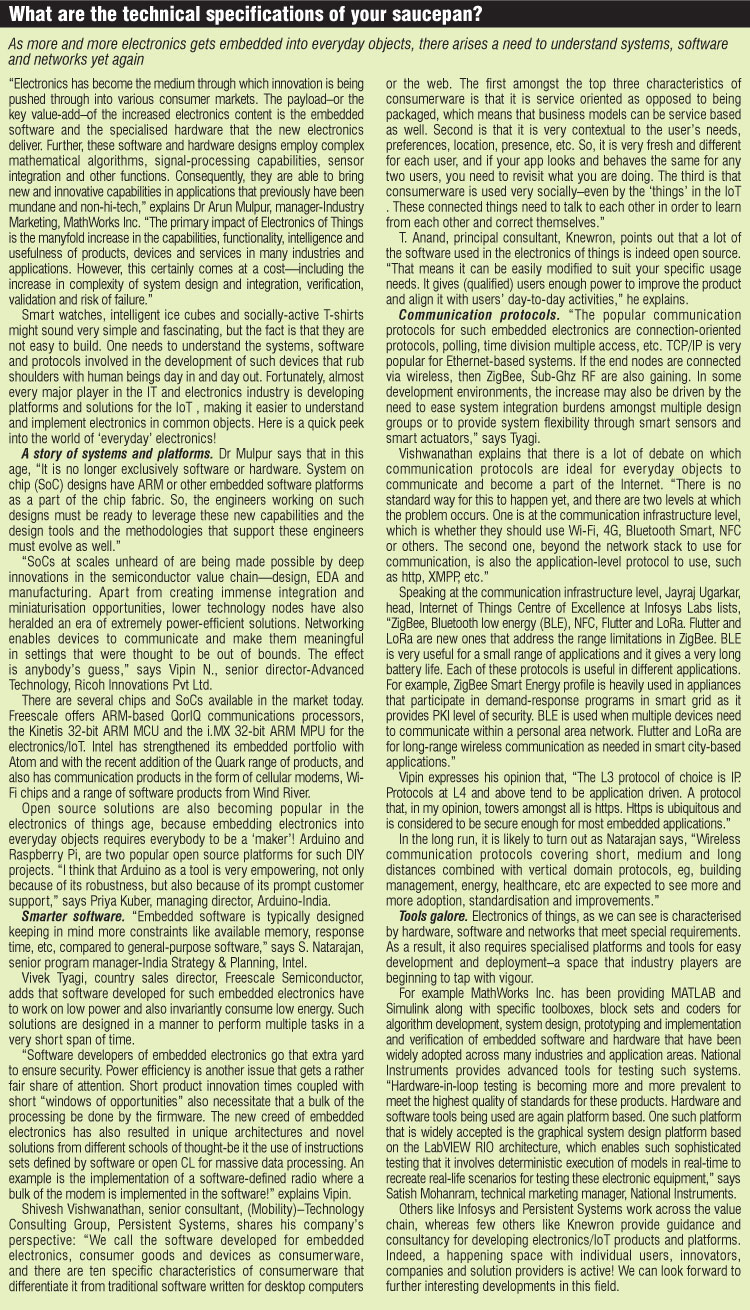Ice cubes and more. Nihal Kashinath, founder, IoTBLR, a Bangalore-based Internet of Things DIY group, says, “There are several such things—from T-shirts that have electronic displays and can tweet on their own, to electronic ice cubes that can keep track of how much you have had to drink at a party, pretty much anything can have electronics built into it.” At IoTBLR, members have recently built an electronic smart glove that enables gesture-based control, home automation like automatic light switches and water-level monitors, a pet feeder that can be activated remotely, etc. Currently, some groups are working on pollution-monitoring projects for smart cities whilst some other groups are working on building cloud-based infrastructure that electronic devices can plug into to become a part of the IoT.
Smartphones. In the light of such whacky examples, Jayraj Ugarkar, head, Internet of Things Centre of Excellence at Infosys Labs, gives a down-to-earth explanation as to why he finds the smartphone itself to be an amazing object of this era: “Granted, I come from a generation that used wired phones with rotary dials, and it is natural to be amazed by a fancy smartphone, but the amount of capabilities contained in today’s smartphone far outstrips what we use it for today. Sensors embedded in smartphones like gyroscope, accelerometer, magnetometer, GPS, gesture recognition and camera can sense our ambience, and software like analytics, event processors and augmented reality will change the way we use a smartphone. For example, it is possible for the gyroscope in your smartphone to detect how much you are swaying whilst walking after a session at the bar, which it can use to predict how bad your driving might be, and even instruct the car not to start! Another example is a gesture-based application that detects when a baby turns on his or her side in the crib. Sudden infant death syndrome (SIDS), which is caused by babies turning onto their sides whilst sleeping is the third leading cause of deaths in infants. As you can see, in each of these cases, the electronics embedded in them allows you to use the smartphone for completely new reasons far beyond communication and entertainment. The way smartphones are being used today is just the tip of a large iceberg. Over the next several decades, we will see some amazing and completely new uses of smartphones.”
Gecko. Ugarkar also finds the Gecko or Tile quite mesmerising. “A Gecko or Tile can be used to track your belongings. If you are like me and constantly lose things, then a Gecko or Tile can help you track and find it using your smartphone. The interesting part about Gecko is that it can be used for a lot of other things like detecting motion, gyroscope applications like waving to open a garage door, reminders to do physical things like closing a door, taking trash out, consuming a pill, etc. The number of applications is simply countless and I cannot think of all, but I strongly believe Gecko or Gecko-like devices will make things around us intelligent so that we can connect, communicate and command them.”
Smart meters, cards and accessories. The ‘smart list’ is endless, according to Anirban Dey, managing director, SAP Labs India. “Notably, we have smart meters, smart cards and smart accessories. Smart meters not only track the consumption but also send that data over wireless networks to the data centre on a continuous basis. Imagine an entire city being monitored by smart meters and then these meters sending information to a central station for billing purposes. At the end of the month, the bill is automatically generated and sent to the consumer via email and balance due is deducted from the bank account without requiring any human intervention. That is the age we are walking into! The amount of silicon that is getting installed into the modern-day cars is also mind-boggling. It not only calculates the optimal travel route but also monitors the health of the car from engine status to wheel pressure. The intelligence built into the chips can predict the service date and sets up an appointment at a nearby service centre for the same. Again, without any human intervention! The latest in silicon technology is what we call wearable devices. These modern accessories not only look fashionable but also have some serious brains behind them. They can monitor the heart rate, blood pressure, calories burnt, etc and pass on that information to smartphones for the purpose of analysis. The day is not far when the smart accessories you wear can predict your next ailment and automatically notify your physician for a check-up!” he explains.







